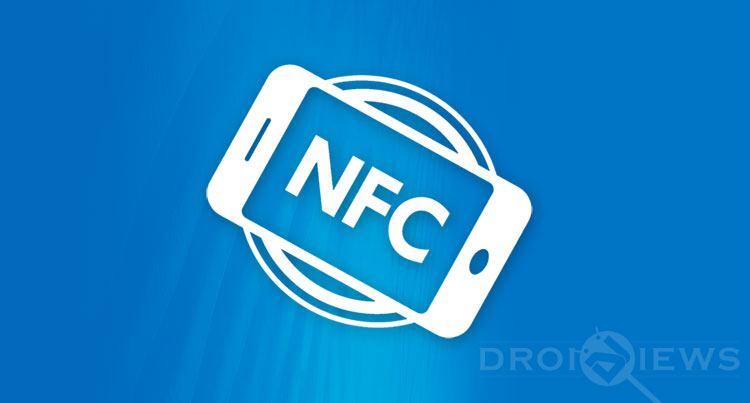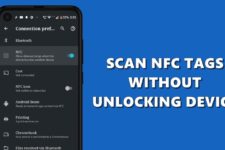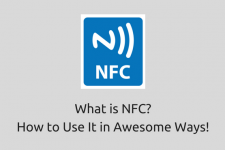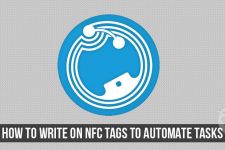
NFC (Near Field Communication) is an interesting and useful feature that was introduced to smartphones a few years ago. This feature allows the transmission of data (photos, videos, documents, web pages, app links, contacts,..) between two devices provided that both the devices have NFC enabled. Although this feature was being developed for so many years, NFC hit the Android market in 2012. Sony Xperia P, the first device commercially launched which had the NFC feature built-in.
The reason which makes NFC more reliable than Bluetooth and Wi-Fi is the rate of transfer. The speed (rate) of transferring data is fast. Faster than Bluetooth and Wi-Fi but very less than the speed of light. As its full name states, the NFC is possible only when two compatible devices are close enough. This does mean that the NFC has a shorter range than Bluetooth and Wi-Fi. Further digging deep there are two types of NFC devices active and passive.
Passive NFC devices include tags (Sony tag+,..) and other small transmitters generally fit into interactive signs and advertisements. The purpose of these tags is to give information to the device (acts only as a source) such as turning Wi-Fi On/Off, switching profiles, etc. These tags don’t require any power source and can be easily customized to work with any NFC-compatible device. Some good apps for tags customization are NFC Task Launcher and NFC Tools. It is to be noted that passive devices can’t communicate with each other.
Active NFC devices are devices having built-in NFC support. These devices are able to both send and receive data (peer-to-peer connection). Active devices can communicate with each other. This feature has led to the rise of Android Pay. Examples of active NFC devices includes smartphones, public transport card readers and touch payment terminals.
Requirements for using NFC
- An Android device having built-in NFC
- Another Android device (having built-in NFC) to transfer data with the above device
Note- Instead of another device passive NFC devices (tags) can also be used. In this guide, we will tell you how to use NFC with both the type of devices.
How to Use NFC with Active NFC Devices
- Navigate to Settings»Wireless & Networks»More.
- Click on the NFC option to enable it (Android Beam will automatically activate).

- Repeat steps 1 and 2 with both the devices to turn NFC on.
- Then, make sure the device receiving the file is on its home screen.
- Then, open the content you want to share on the sender device.
- After that, bring both the devices close to each other.

- The display on the sender device will shrink to the size of a thumbnail with a touch to beam option displaying on the top of the screen.
- Next, touch the thumbnail (display) and the file will be sent to the receiver.
- The notification of successful beaming will be displayed.
- Now, you can access the file from the other device too.
That was it, simple and easy. This can be done with any active devices including android pay terminals to exchange data. Just simply bring the phone close enough, touch the display and money will be transferred.
Note- In this guide, I have explained how to use it with tags. You can use any passive device. For easy understanding let us say this tag will turn Wi-Fi On when touched with the tag.
Current State – Wi-Fi Off (Before touching the tag)
How to Use NFC with Passive NFC Devices
- Navigate to Settings»Wireless & Networks»More.
- Click on the NFC option to enable it (Android Beam will automatically activate).
- Touch the device with the tag.
- The notification of successful change will be displayed.
Current State – Wi-Fi On (After touching the tag)
I know, it was easier done than said. Go try out this new feature and if you come across any issues related to NFC we will be a few clicks away. Feel free to comment or ask any queries related to this post.
So NFC, is it a great feature? Yes, it is. Is it better than Bluetooth and Wi-Fi for data transmission? Yes, it is. Is it safe using NFC for payments? You bet, it is. NFC actually provides a great experience in our day to day life and makes things like payments and profile switching easier.





Join The Discussion: